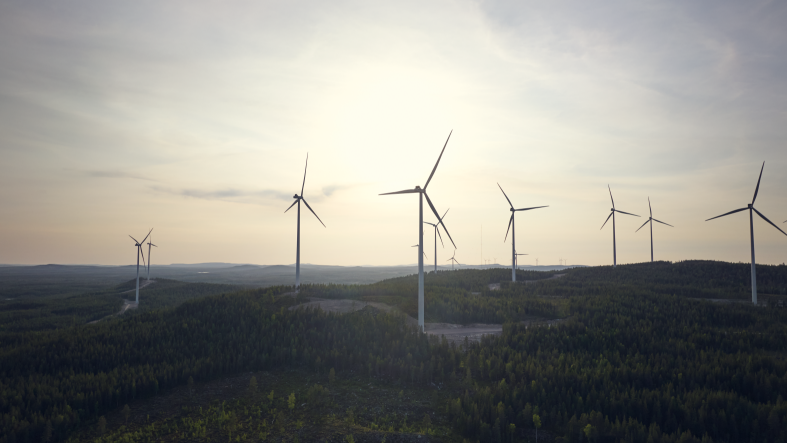In addition to wind power, solar power, and bioenergy comprise a significant part of SEB's green lending for renewable energy production. Loans are also issued for energy efficiency investments in buildings and industrial processes, sustainable transport, waste management, and sustainable forestry.
For SEB, green bonds and increased green lending are strategically important. The bank has set a target of growing lending in the sustainability category – which includes green loans – 10 times by 2030, compared to the base year of 2021. But let’s start by going back a decade in time...
SEB began investigating the conditions for issuing its green bonds as early as 2015. This resulted in a stringent framework – the bank set high self-imposed requirements for calling a bond green. Norwegian Cicero, the external rating firm hired by SEB, gave the bonds their highest rating (dark green).
Small amounts at first
Green lending was initially small, and in January 2022, five years after the bank’s first green bond, it amounted to 29 billion Swedish kronor (2.6 billion euros). This compares to total corporate lending, which amounted to just over 1,700 billion kronor that year. In the same year, SEB updated the framework to make it slightly broader while aligning it with the EU taxonomy. This made it possible to lend to more sustainable projects.
“The purpose of the change was not to dilute how green the bonds are, but to increase the opportunities for us to support more customers in their transition,” says Philippa Allard, at SEB's Investor Relations department.
With the new framework in place, lending took off, and at the end of 2024, it amounted to 82 billion kronor. It was still a small part of total corporate lending, which then amounted to about 1,750 billion kronor.
The issuer of a bond chooses who will assess and rate the framework. When SEB started with green bonds, there were few directives for what could be called green, while there are now detailed guidelines from several different industry associations. The credit rating agency Standard & Poor’s (S&P), which now includes Cicero, has put a medium-green stamp on the bank’s current framework. This type of assessment is similar to those made by S&P and other rating agencies of traditional bonds.
“The difference is that the green ratings and the methods for setting them are still less regulated and transparent than how the rating agencies set their traditional credit ratings. It is a less mature market,” says Johan Nyberg, head of long-term funding in SEB’s Treasury department.
Treasury can be compared to an internal bank, which handles borrowing via bonds, among other things.
Acknowledgement is a driving force
Johan Nyberg says that one of the driving forces for SEB's customers to choose green financing is to show, for example, their customers and shareholders that they are participating in the green transition. A green loan means an acknowledgement that an investment is really useful. The total costs for SEB to offer a green loan are often the same or sometimes slightly higher than a regular loan due to the costs involved in the external evaluations of the framework and borrowing.
“At the same time, we reach a slightly larger investor base through the green bond market than usual. This allows us to compensate for the other costs to some extent in terms of price,” says Johan Nyberg.
Correspondingly, those who buy SEB's green bonds, i.e. funds and institutions, are interested in investing in green assets. That interest comes from private individuals and companies having chosen to put money into funds that buy green assets. A green cycle is underway.
“Everyone who participates in the cycle is interested in showing that they are responsible people and that what they buy, lend to or invest in is green. There are also more and more regulations to take into account that require documentation and verification,” says Philippa Allard. “Therefore, transparency and reporting are an important part of the green cycle.”

